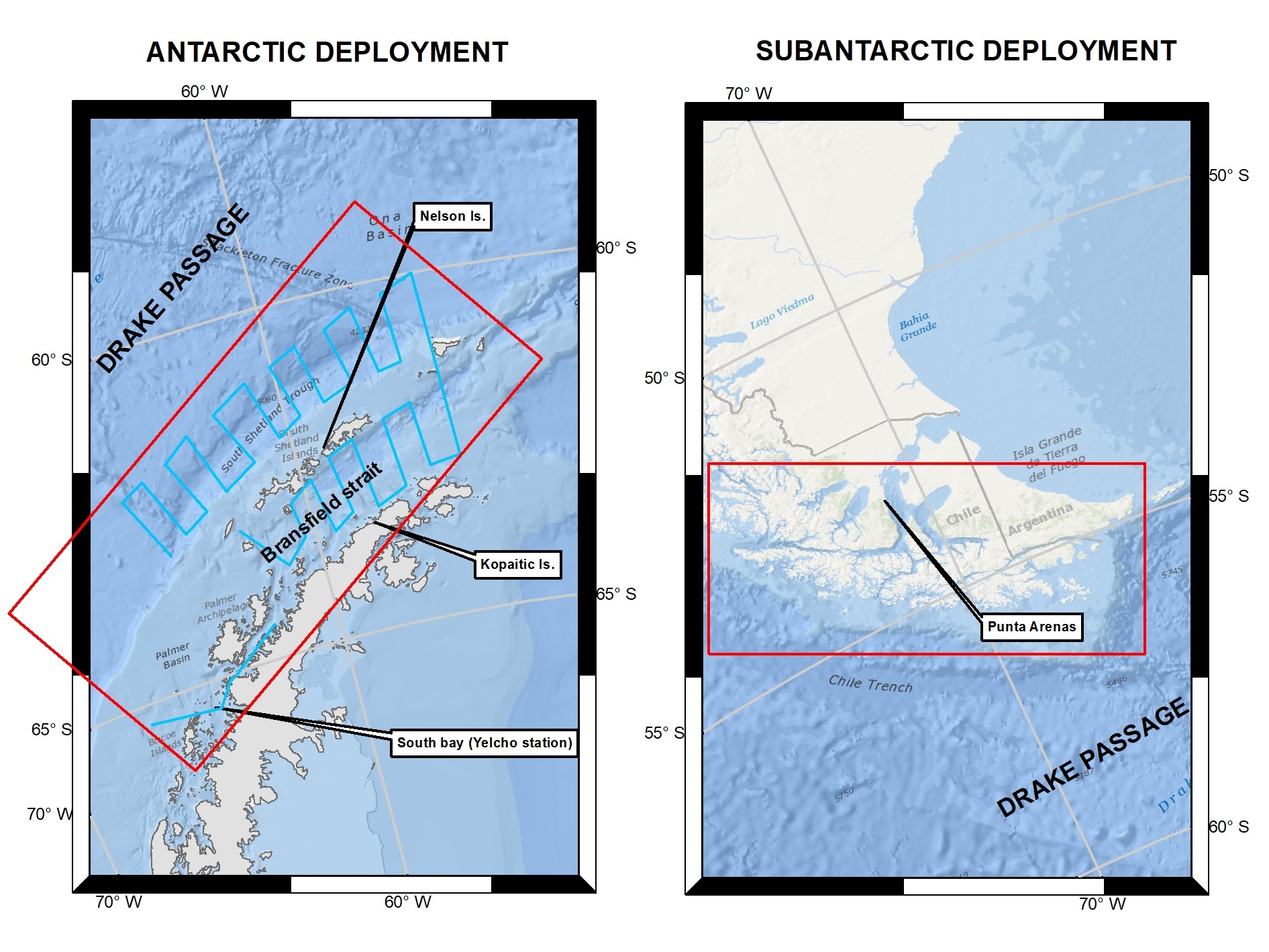A New Glider for Understanding Key Oceanographic Processes in the Southern Ocean

We are glad to announce that the Chilean Antarctic Institute (INACH), and the Service Oceanographic and Hydrographic of the Chilean Navy (SHOA), awarded a proposal for the acquisition of an autonomous underwater vehicle (Glider) during the XI medium-size fund for equipment acquisition launched by the Chilean Research and Development Agency (ANID), FONDEQUIP. In this call, 152 projects from over all Chile were evaluated, among which 28 were awarded, being the proposal entitled “Strengthening of observational oceanography, teaching and research in the Southern Ocean (Antarctic) and Austral macrozone, through the acquisition of an autonomous underwater", one of those awarded.
This proposal was supported by researchers from: NOAA (USA), British Antarctic Survey (BAS-UK), Norwegian Polar Institute (NPI), Korean Polar Research (KOPRI, South Korea), Sweden, Chilean universities and the Southern Ocean Observing System (SOOS). The Glider will be equipped with sensors of: conductivity, temperature, oxygen, fluorescence (CTD-O-FLNTU), and ADCP for current measurements.
Chile is one of the most vulnerable countries affected by climate change1, where many of these changes affect sub-Antarctic and Antarctic zones, strongly affecting multiple ecosystem services associated with fisheries, tourism and conservation. This glider will allow the scientific community to: a) monitor oceanographic conditions, water masses, b) contribute to the refinement of ocean-atmosphere models, c) monitor of harmful algal blooms (HABs) in Antarctica and the Austral macrozone, Strait of Magellan.
Glider deployments are expected to begin during the season 2024/2025. The glider will be deployed in the Subantarctic zone, Magellan Strait for strengthening of oceanography and teaching (to see map). During the development of this project, we hope to understand key oceanographic processes in the Antarctic Peninsula linked with the intrusion of the Circumpolar deep waters (CDW), changes in productivity, and interactions of the krill swarms with top predators and the fisheries in the framework of the Marine Protected Areas.

The glider will be part of the Scientific Department of the INACH (www.inach.cl), and it will provide support to researchers of the Chilean Antarctic Science Program (PROCIEN)2 that are working with projects related to the oceanography, ecology of top predators and fisheries and from other Antarctic National Programs. For more details, please contact to Dr. Lorena Rebolledo, coordinator of the project, to lrebolledo@inach.cl and MSc Francisco Santa Cruz fsantacruz@inach.cl
References
1. https://climateknowledgeportal.worldbank.org/country/chile/vulnerability
2.https://www.inach.cl/inach/wp-content/uploads/2022/10/CHILEAN-ANTARCTIC-SCIENCE-PROGRAM-2021.pdf






